I sewed the tie-outs onto the Tyvek tarp on Friday night and headed up the bush to give it a try-out on Saturday morning. Completed it weighed 610 grams. An acceptable weight for such a commodious and versatile shelter. In silnylon it would weigh under 350 grams.
To reiterate (just in case you have not read my earlier post yet) this is a 10 foot by 10 foot (actually 3 x 3 metre) piece of Tyvek Homewrap. I think it looks better with the printed side in. This is the simplest configuration (in the photos below) for 1-2 people pitched from the centre of one side to the centre of the other and with flaps folded in to make floor/doors.
I am using a piece of Polycro here as a ground sheet, but another (approx 5′ x 7′) piece of Tyvek (205 grams) would be even better (and more durable). A similar piece of silnylon would weigh 110 grams. Adding the weight of the guys and pegs will still give you an amazingly flexible shelter option that weighs under 500 grams!
You can also pitch the tarp as a simple floorless diagonal which will span 14 feet and have edge cover of 10′ either pegged out from from a pole or tree to the ground (as shown) or as hammock tarps between two trees. Or it can be pitched as a completely enclosed hammock shelter spanning 10′). If you are using it as an open shelter pitched much as above except from the corners instead of half way along the sides (as shown) it will accommodate several people. I would use a ridge pole with such a span. (You can get away without one to 10′).
Anyway plenty of room for me and Spot (who is hiding under my sleeping bag).
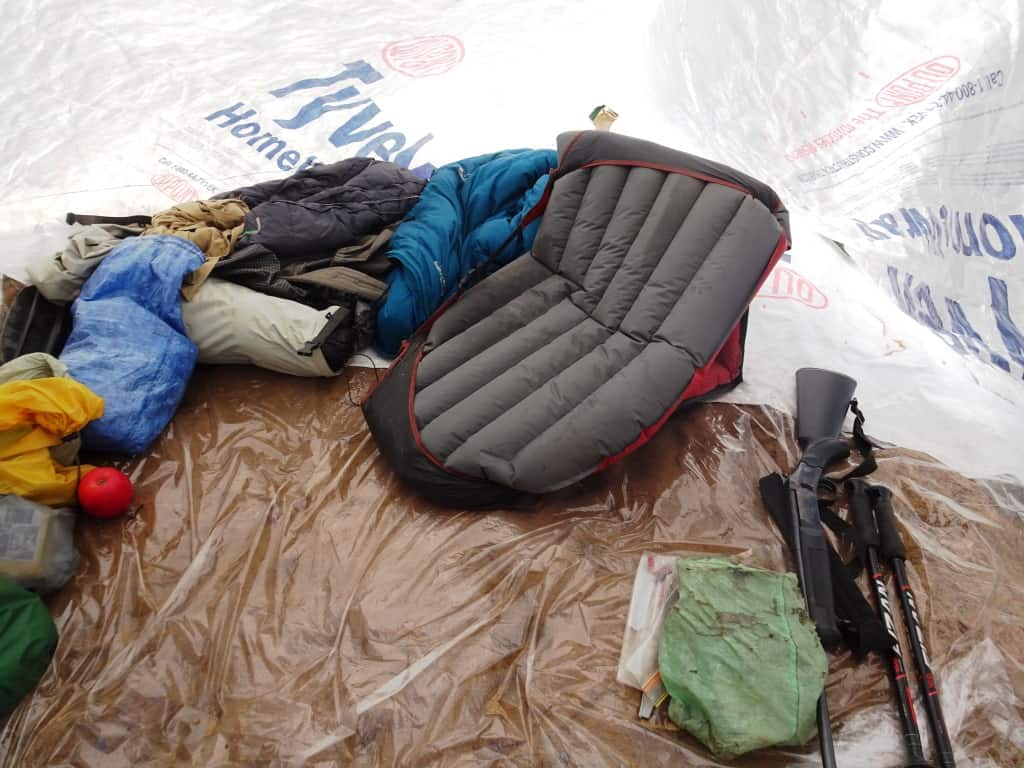
Spot has come along simply to smell the flowers.
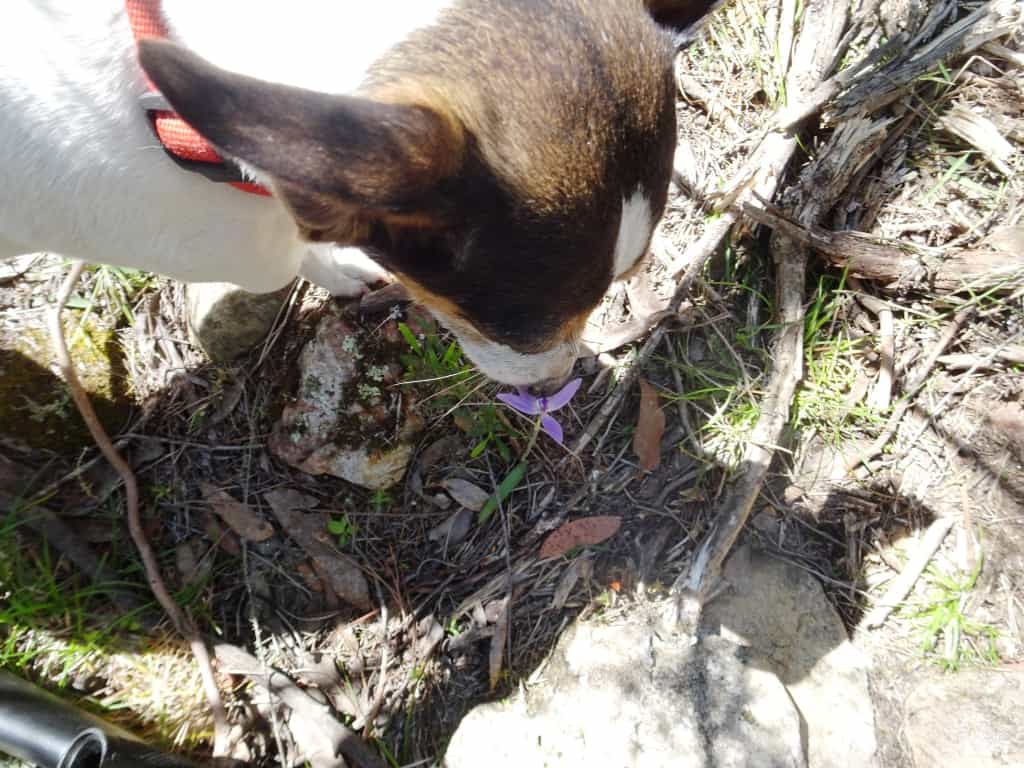
Looks good down (a very steep kilometre vertically) by the river, doesn’t it?
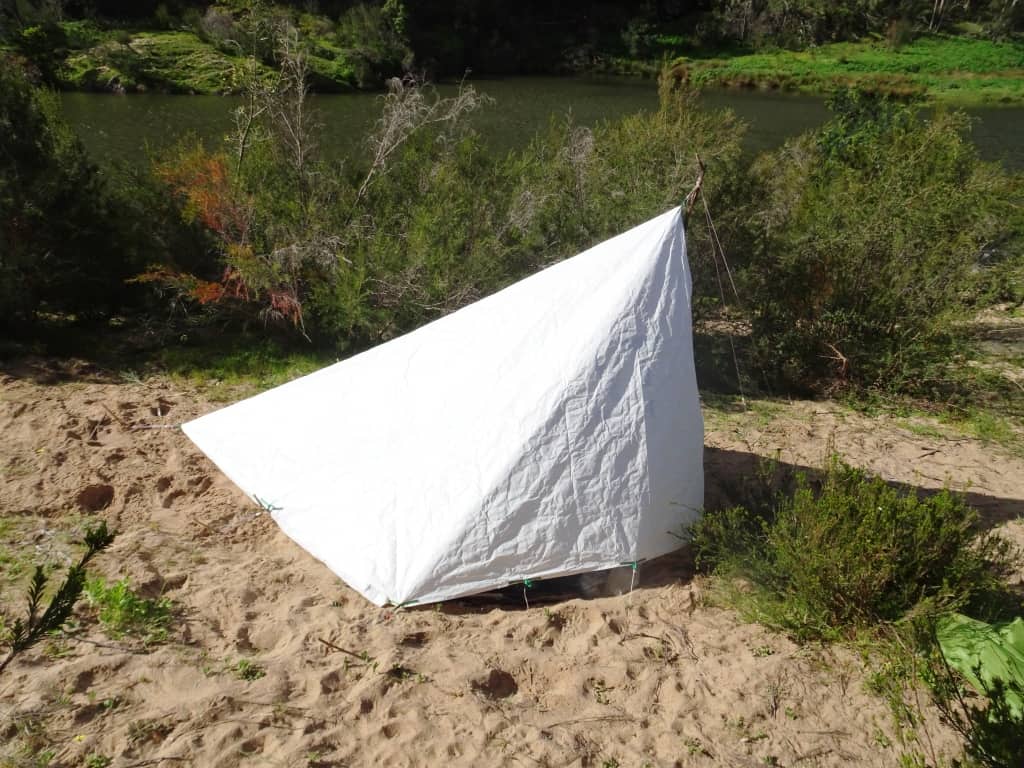
You don’t need to bring pegs or a pole. The bush is full of sticks which can be used instead. A foot long forked stick like this will give the tent better purchase especially in sand than any bought peg anyway.
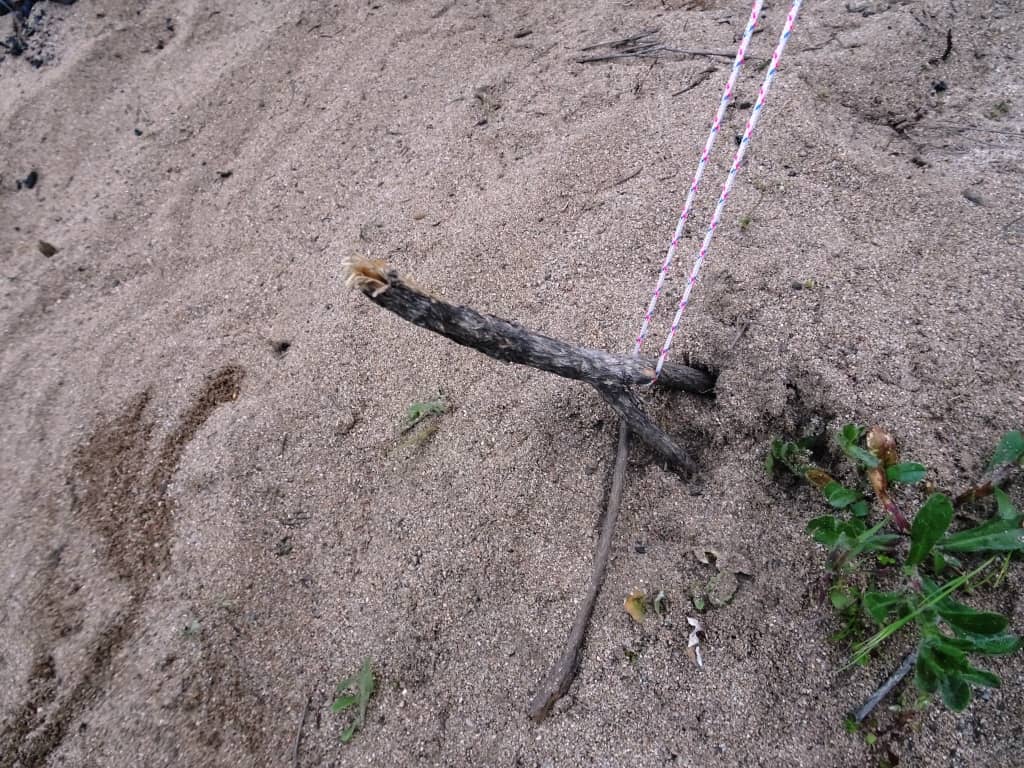
And it is a simple matter to tie the shelter to a tall stick.
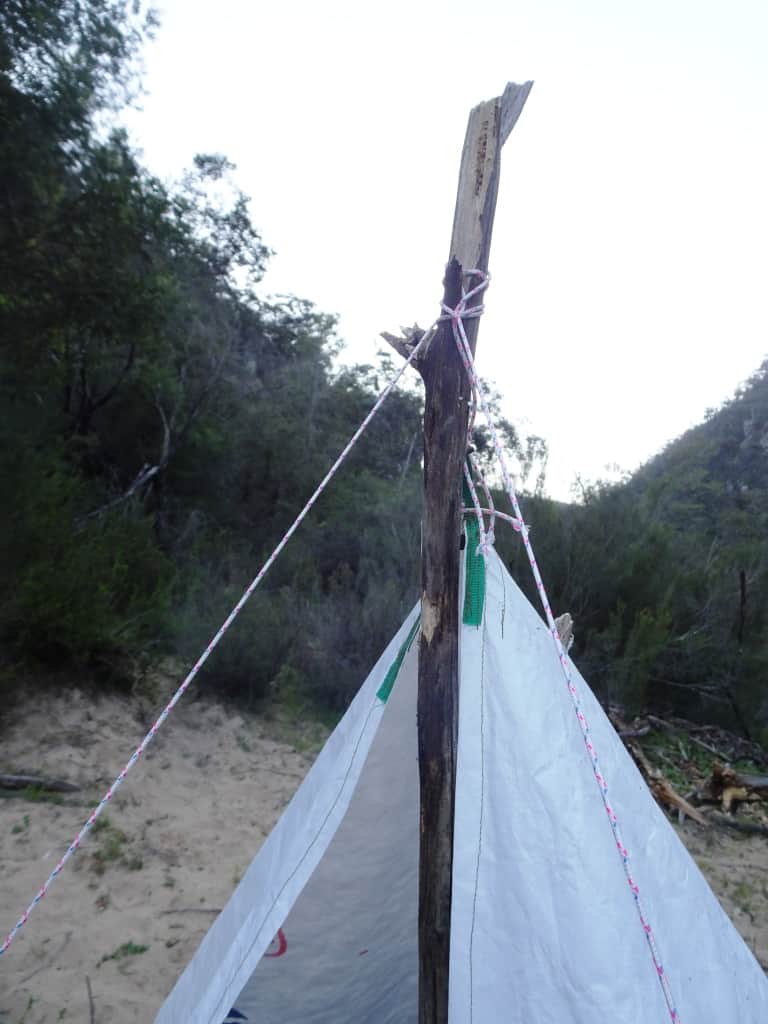
It always looks even better with a fire out the front I think.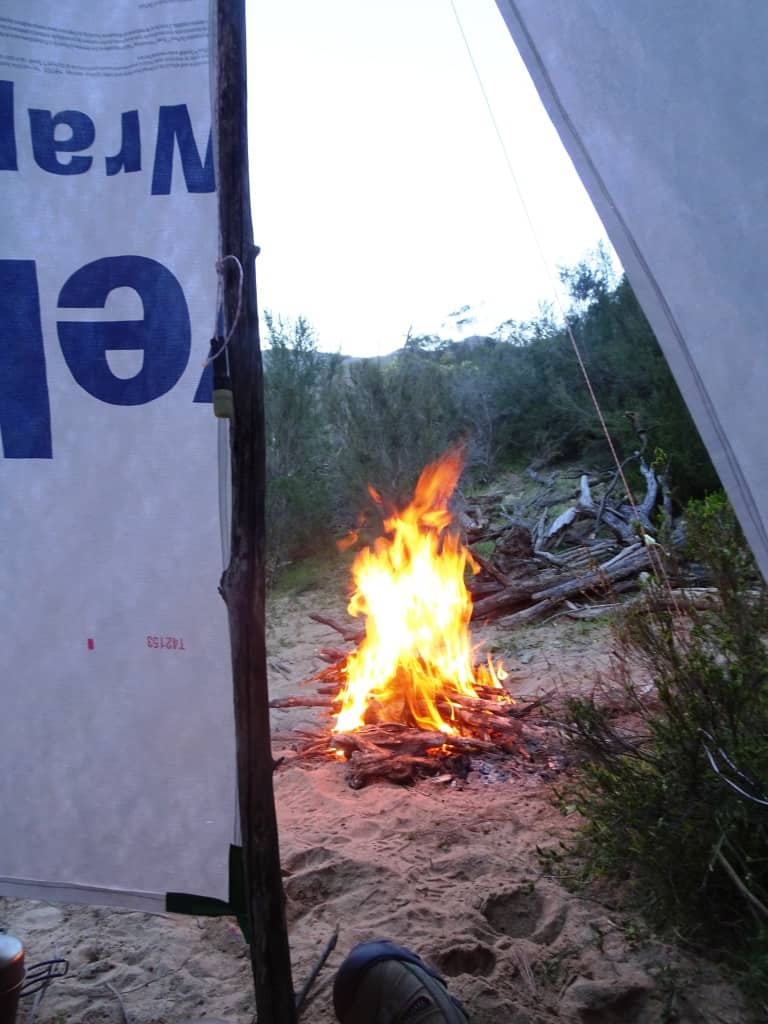
Especially at night.
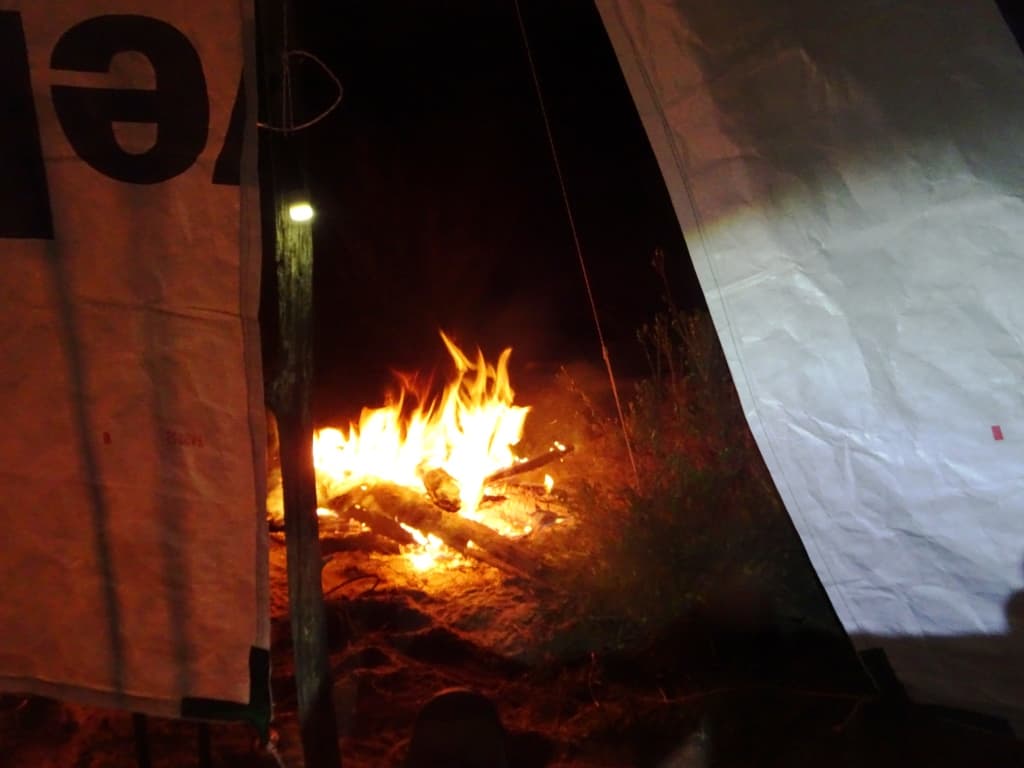
See Also:
https://www.theultralighthiker.com/2019/09/06/two-great-poly-tarp-configurations/
https://www.theultralighthiker.com/2017/11/22/ultralight-ground-sheet/
https://www.theultralighthiker.com/2019/09/07/60-diy-ultralight-hiker-ideas/

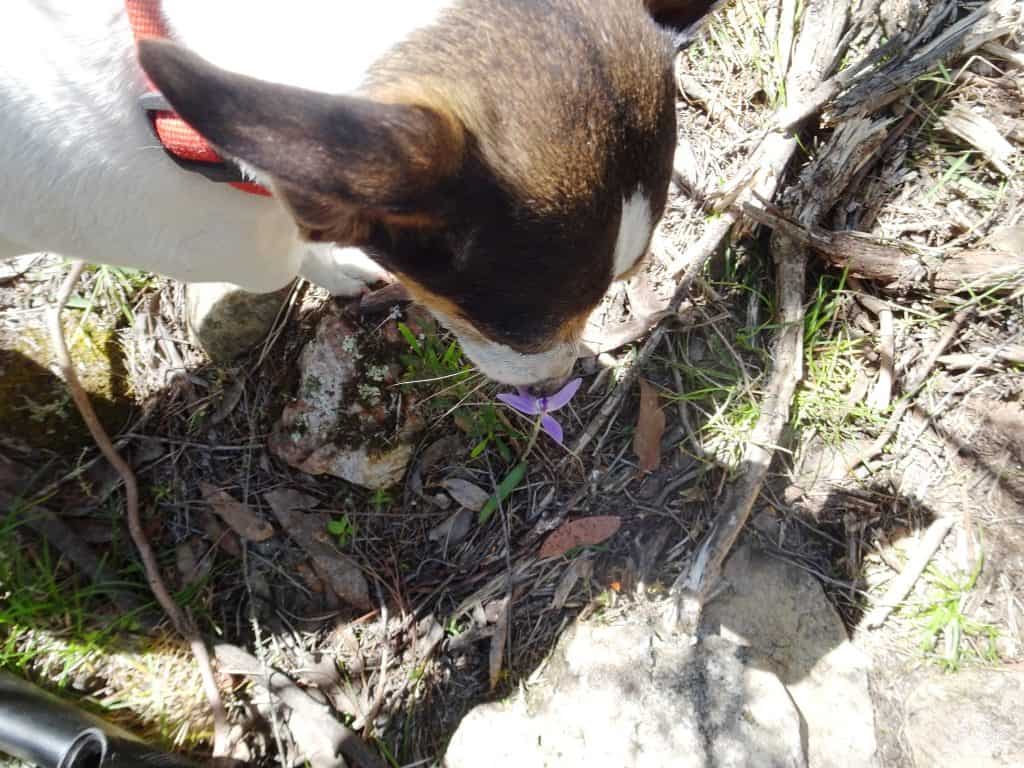
Check out AppyTrails.com . This guy has made and sells polyester tents like this. Bazed on my favorite old canvas BSA verzion from my youth. Good guy. Very customer oriented. I am sure he would love to simply talk. Maybe you dont have to reinvent the wheel.
Good luck guys.
Thanks Normand but I have more than reinvented the wheel with my Grey Flyer tent. Still some refinements to make but I doubt it can be bettered. However I thank you for your suggestion – which looks very good. Worth a post in the future I think. Cheapo too! Cheers, Steve.
Hi Steve, Great stuff. Do you ever get condensation in the Tyvek tent? I predict that you will get lots of condensation with your silnylon equivalent tent.
I have just got some breathing polyester to see if I can eliminate the condensation problem.
Tim
Hi Tim, We don’t get a lot of condensation with the Tyvek but we normally leave the door open. Even so you are right that we get more condensation with the silnylon versions of the same tents, partly because the material does not’stand up’ as well. I also have some silpoly to try out, mainly for its low stretch and because it can be more easily repaired as things will stick to it. What is the breathable polyester you have got your hands on? Cheers, Steve.